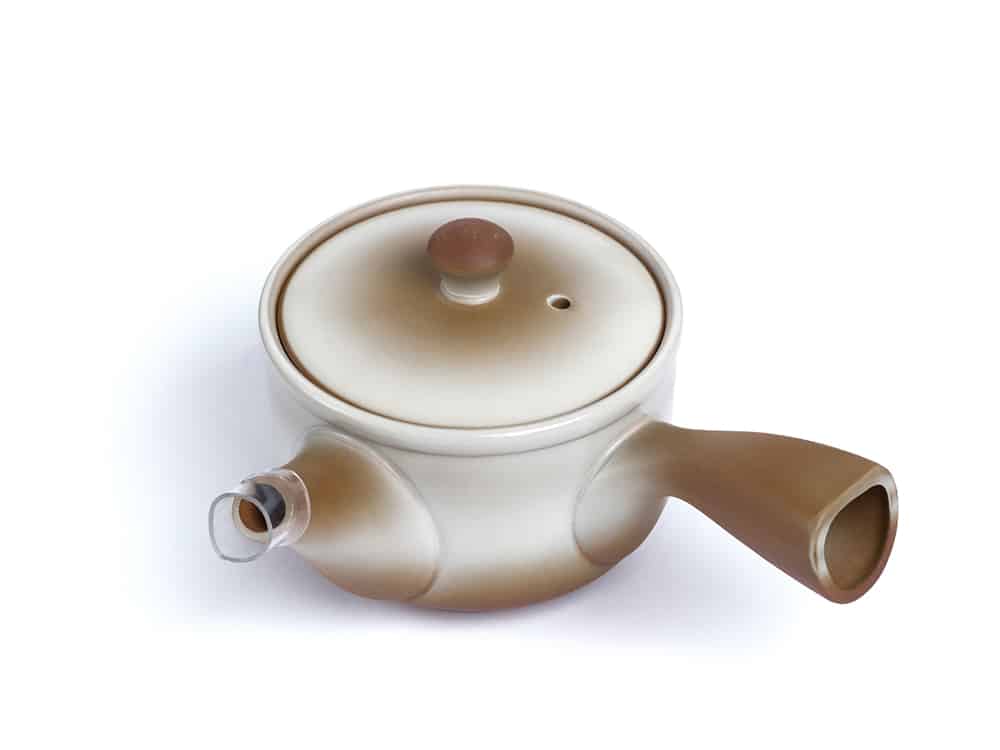Yokkaichi Banko ware (Yokkaichi-Banko-Yaki) is a type of ceramic that originated in Yokkaichi, Mie Prefecture. This ceramic is incredibly heat-resistant and can even withstand direct contact with a flame, making it a popular material for Japanese "donabe" (earthenware pots). In fact, around 80% of donabe in Japan are made from Yokkaichi Banko ware! Yokkaichi Banko ware also uses clay that has high amounts of "shidei," a type of iron substance, that mellows out the flavor of tea. The more you use these wares, the more lustrous they become, allowing you to enjoy their changing appearances for many years. It is a designated traditional Japanese craft by the Ministry of Economy, Trade and Industry.
The History of Yokkaichi Banko Ware

Yokkaichi Banko ware is a type of ceramic that originated in Yokkaichi, Mie Prefecture, and is famous for often being used to make "kyusu" (teapots) and donabe. It is especially prominent when it comes to donabe, making up around 80% of domestic donabe pots. This is because it uses a type of clay that is extremely heat-resistant, allowing it to be heated while empty or over a direct flame.
Yokkaichi Banko ware used for kyusu uses a type of clay called "shidei," which becomes more and more lustrous over time, allowing it to be lovingly used for many years.

It is said that Yokkaichi Banko ware began when Nunami Rozan, a merchant from Kuwana (modern-day Kuwana City, Mie Prefecture), took inspiration from his hobby of Japanese tea ceremony and from 1736 to 1740, built his own kiln in what is now Obuke in Asahi, Mie Prefecture. Rozan created pieces that were exotic in pattern and shape, and they were initially called "kobanko." Rozan hoped they would be used forever and stamped each piece with a symbol that read "banko fueki" (everlasting), which is where Yokkaichi Banko ware got its name.
Rozan passed away in 1777, and due to a lack of successors, Yokkaichi Banko ware temporarily reached a critical point. However, in the latter part of the Edo Period (1832), brothers Mori Yusetsu and Mori Senshu, a pair of antique dealers, built a kiln in Obuke and reignited a passion for Yokkaichi Banko ware. Towards the beginning, many of their pieces heavily resembled Rozan's works, but Yusetsu began to branch out and develop his own style, which became known as "Yusetsu Banko."
At the beginning of the Meiji Period (1868 - 1912), a man named Yamanaka Chuzaemon built a kiln in Suenaga Village (modern-day Suenaga, Yokkaichi City, Mie Prefecture) in order to turn it into a Yokkaichi Banko ware powerhouse. This was actually quite a strategic location, as Yokkaichi had a port which would allow the Yokkaichi Banko ware to be exported all over the country, simultaneously raising its reputation.
In 1911, in the latter half of the Meiji Period, a man named Mizutani Torajiro developed a manufacturing technique called "Han-Jiki" (half porcelain), modeled on British pottery. Han-Jiki refers to ceramics with intermediate dispositions that retain the soft impressions of pottery (made with potter's clay), but have the strength of porcelain (made with stone that contains amounts of glass). In 1912, when Japan left the Meiji Period and entered the Taisho Period (1912 - 1926), this type of pottery was ceremoniously dubbed "Taisho-Yaki" (Taisho ware). Moreover, the development of the mechanical potter's wheel and plaster mold casting made mass production possible, and Yokkaichi Banko ware suddenly became used as dishware all across Japan, as it was also being made into not just tea utensils, but everyday dishes as well.
Characteristics of Yokkaichi Banko Ware

Yokkaichi Banko ware's most sought-after trait is its heat resistance and ability to be held close to an open flame. The clay used to make it consists of about 40 - 50% of highly heat-resistant lithium ore, allowing it to easily withstand open flames and be able to be heated while empty.
Yokkaichi Banko ware is not only popular for its donabe, but kyusu as well. Yokkaichi Banko ware kyusu are made with iron-rich clay, and are fired with a reduction firing technique so that the pottery does not oxidize. This allows the kyusu to absorb the astringent components of tea, mellowing out its flavor. Kyusu commonly are made without decorations such as "yuyaku" glaze or other decorations, instead opting for warm designs that beautifully complement tea time.
Yokkaichi Banko Ware Today

Even today, Yokkaichi Banko ware still accounts for the largest share among domestic donabe pots, making up some 80% of the market share. It was designated as a traditional Japanese craft by the Ministry of Economy, Trade and Industry in 1979, and even has a local mascot for PR purposes, as well as an original sticker that sets it apart from overseas products and replicas.
Every year since 2016, Komono, Mie Prefecture (a major producer of Yokkaichi Banko ware) hosts a joint public-private event called "Komo Gaku," which is a workshop where people can learn about Yokkaichi Banko ware and techniques from actual craftspeople. Yokkaichi has proactively continued the local industry by developing crafting techniques, training successors, and holding events. Not only can you find Yokkaichi Banko ware as donabe pots and kyusu, but also as other dishware and everyday pieces that complement any lifestyle.
Related articles:
▶ Traditional Japanese Crafts: The Complete Guide to Japanese Ceramics
▶ The Complete Guide to Traditional Japanese Crafts
▶ Traditional Japanese Crafts by Industry: Textiles, Ceramics, Dolls, Kokeshi, and More!
If you want to give feedback on any of our articles, you have an idea that you'd really like to see come to life, or you just have a question on Japan, hit us up on our Facebook, Twitter, or Instagram!
*These products may not be able to be shipped to certain countries. Please see the retailer's website for more information.
The information in this article is accurate at the time of publication.

